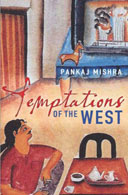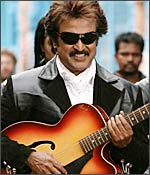
Temptations of the West: How to be modern in
By Pankaj Mishra
In many ways, this is an uncomfortable book. For English-speaking Indians used to the ‘India Shining’ story streaming out of newspapers, magazines and TV channels, it is disquieting to come across someone who holds a mirror to what can only be called the failures of the Indian state. That is what Mishra does with his latest book. Yes, he has an agenda – a liberal, left-leaning, anti-West one, and that can colour a lot of what he says. And one does get the sneaking suspicion that this is a book meant for the West, and not the South Asians he writes about. Yet, it is thought-provoking and interesting and worthy of note.
The book is Mishra’s take on how traditional societies in
In
And there is a reclaiming. Power has passed to a class of ‘professional politicians’, we have been forced to accommodate Dalits and Muslims and a million other underprivileged classes in politics and a re-arranging of the old order is underway. There no longer is a monolith Congress Party, able to accommodate any and everyone. Each class has its own demands and grievances and its own play for power. Indian democracy is unruly and untidy, and while politicians of all political hues have consistently failed the poorest of the poor in this country, the faith in elections and in their ability to change people’s fate is touchingly alive.
But Mishra has a warning – especially on resurgent Hindu nationalism. ‘Hinduism in the hands of these Indians has never looked more like the Christianity and Islam of popes and mullahs, and less like the multiplicity of unselfconsciously tolerant faiths it still is for most Indians,’ he says. And this ‘profound modernity of religious nationalism’ is disquieting for Muslims and other minorities whose faith in Indian democracy has been tested time and again by the repeated violence unleashed against them. No Indian Muslim so far, other than Kashmiris, has ever been responded to jihad calls anywhere in the world. That statistic is steadily coming under threat.
The chapter on
In Pakistan, Mishra talks of ‘the dwindling of human possibilities, and the steady grinding-down of individual lives’; of a feudal society at odds with democratic institutions; of an ancient Islamic global civilization broken down by ‘the invincible modern civilization of the West’ and producing a fanaticism that crushes freedom; of Deobandi madrassas that train people from areas as far flung as Kashmir, the Philippines, Chechnya and Afghanistan.
But his most touching analysis is left for
Strangely enough,




